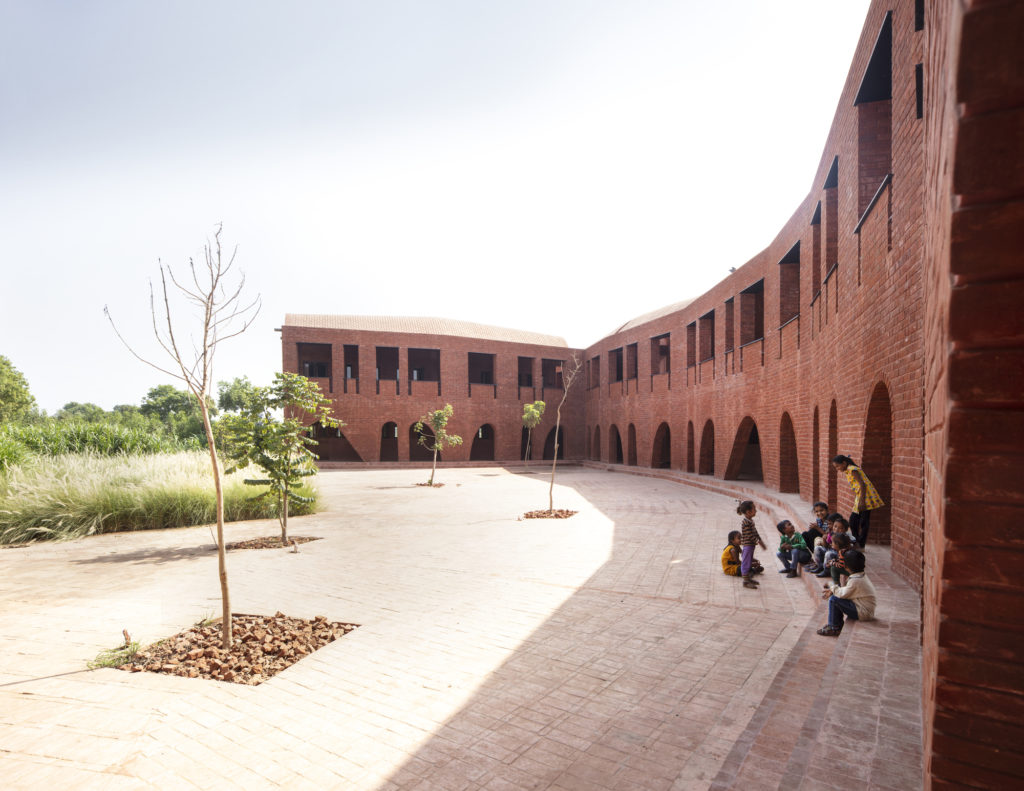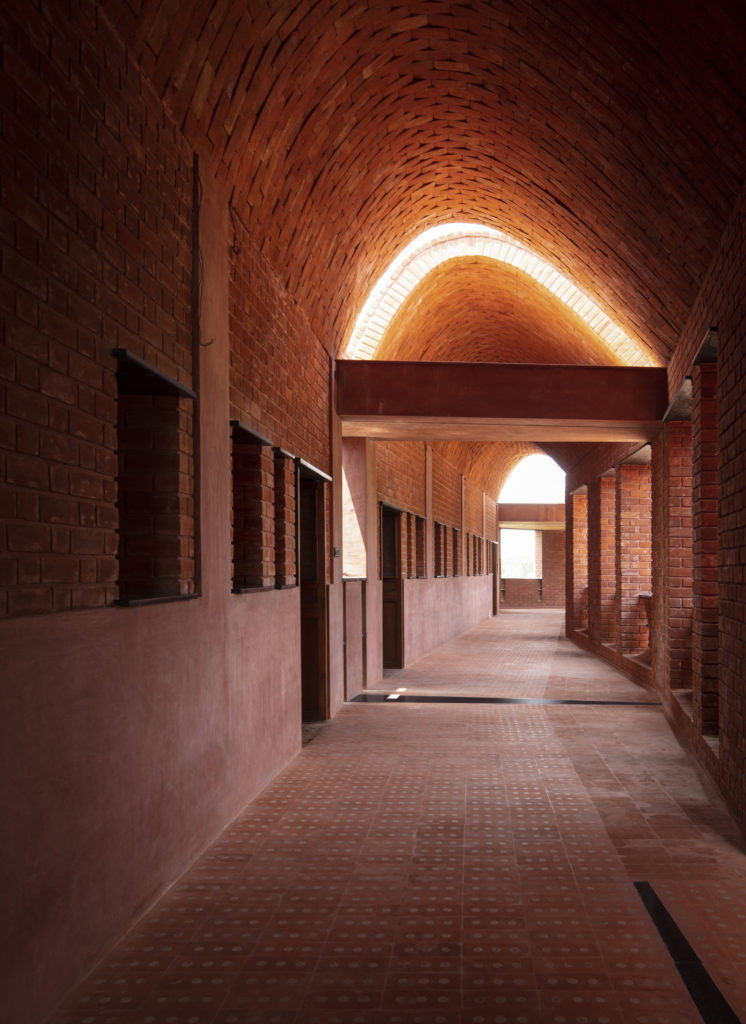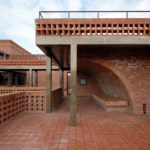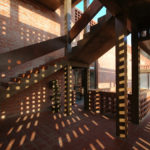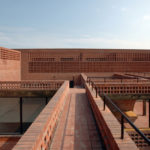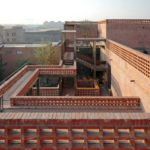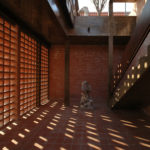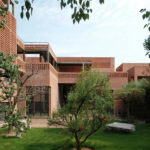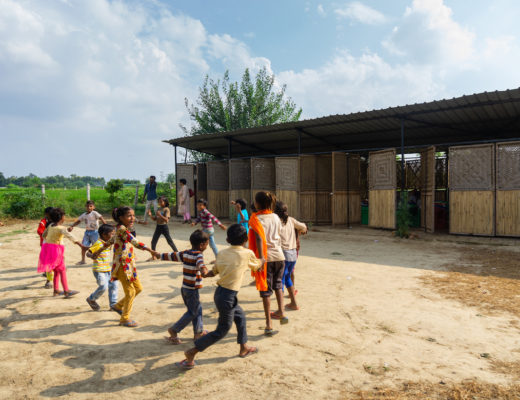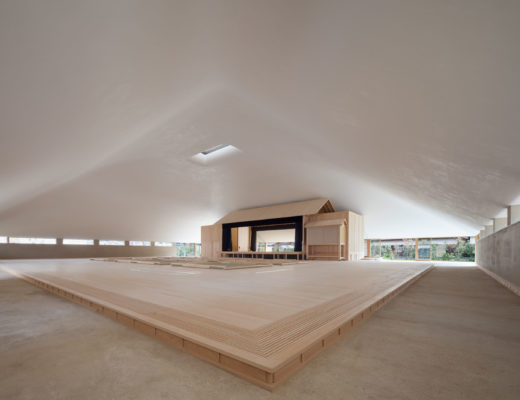Indian architect Samira Rathod has designed a school inspired by the vivid imagination of childhood memories and children’s unbridled and creative outlook towards learning.
The architect and her team used this premise to design the spaces of the school in Bhadran in India’s Gujarat province. Designed and perceived to sit on four acres of a fruit orchard, surrounded by tobacco fields, the design of the school grew organically as a series of modular classrooms. It has been designed to let children prance their way through the trees, encountering different elements, forming a composition of experiences that weave together to bring forth the fabric of the school.
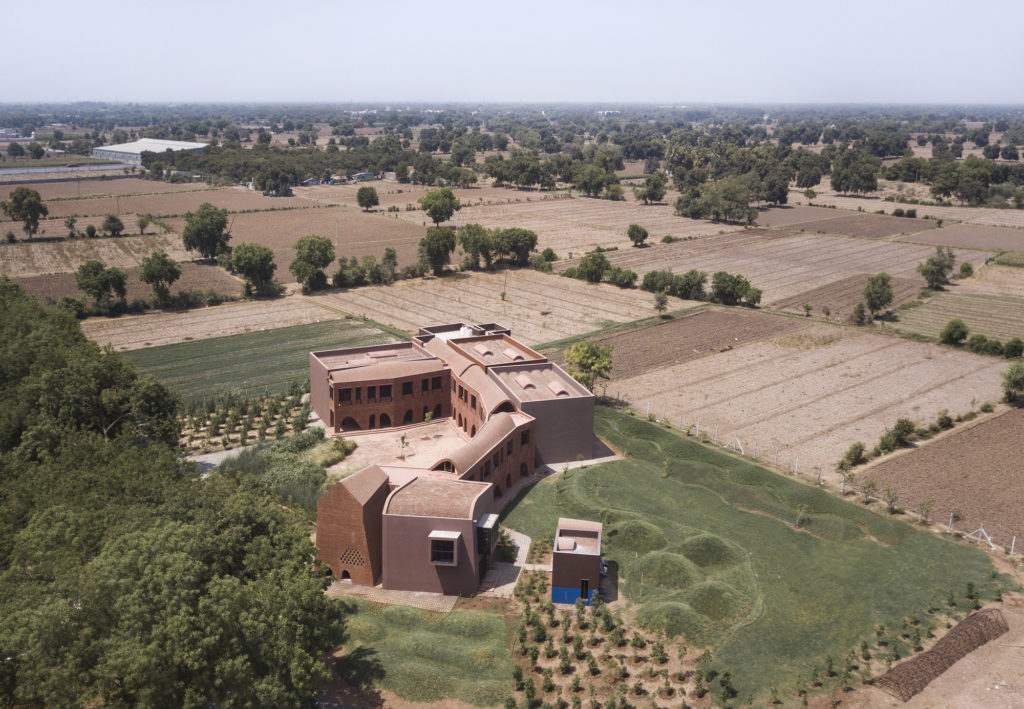 The meandering form is articulated from a study of scribbling patterns of a child, architecturally expressed as asymmetric arches, breaking into lopsided vaults and irregular jack arches spanning across skewed beams. Childhood memories form a big part of the narrative as the design is perceived as a collage of many small events, of small places and spaces, to hide, to collide, climb, roll, run into and out of, to satiate curiosities of a forming mind, allowing its idyllic imagination and wonder.
The meandering form is articulated from a study of scribbling patterns of a child, architecturally expressed as asymmetric arches, breaking into lopsided vaults and irregular jack arches spanning across skewed beams. Childhood memories form a big part of the narrative as the design is perceived as a collage of many small events, of small places and spaces, to hide, to collide, climb, roll, run into and out of, to satiate curiosities of a forming mind, allowing its idyllic imagination and wonder.
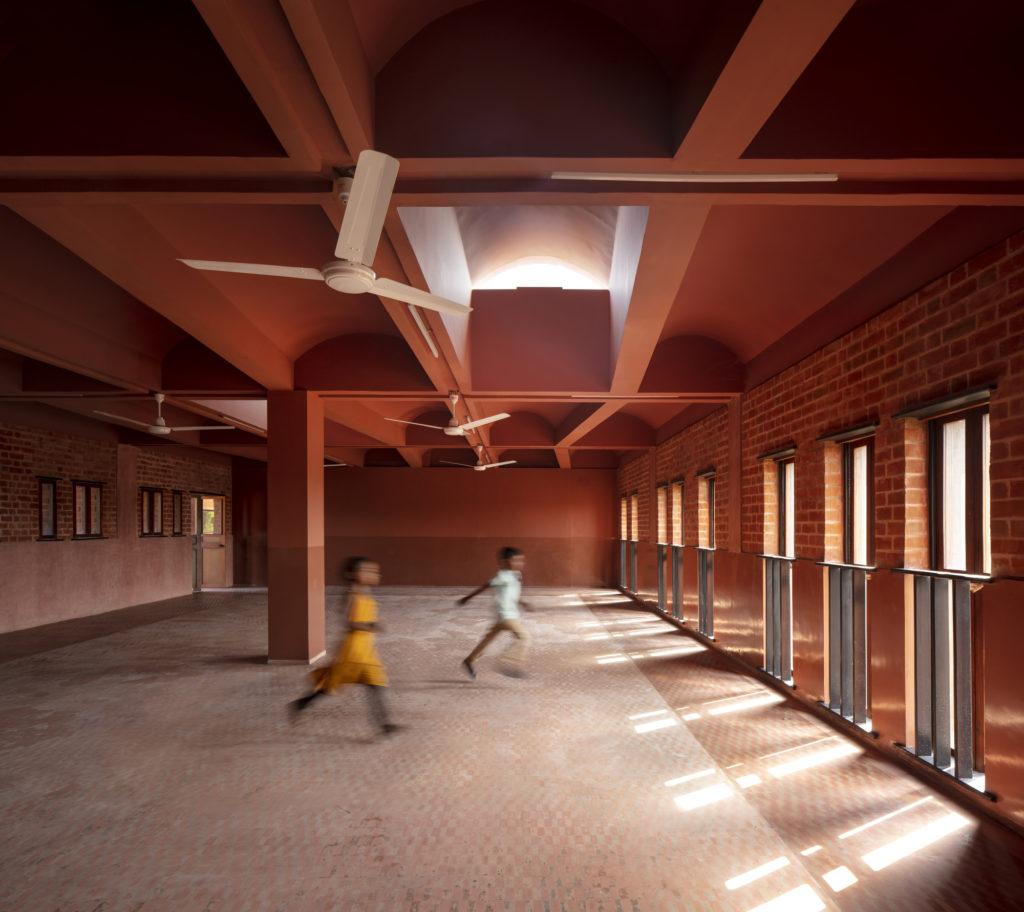 The dancing arches are a reminder of this freedom – encountering alcoves, cracks and crevices, projections, niches, inhabited bridges, boxes, and mezzanines – adding to a composition of experiences that would weave into the fabric of the school, much like the maze-like town of Bhadran itself.
The dancing arches are a reminder of this freedom – encountering alcoves, cracks and crevices, projections, niches, inhabited bridges, boxes, and mezzanines – adding to a composition of experiences that would weave into the fabric of the school, much like the maze-like town of Bhadran itself.
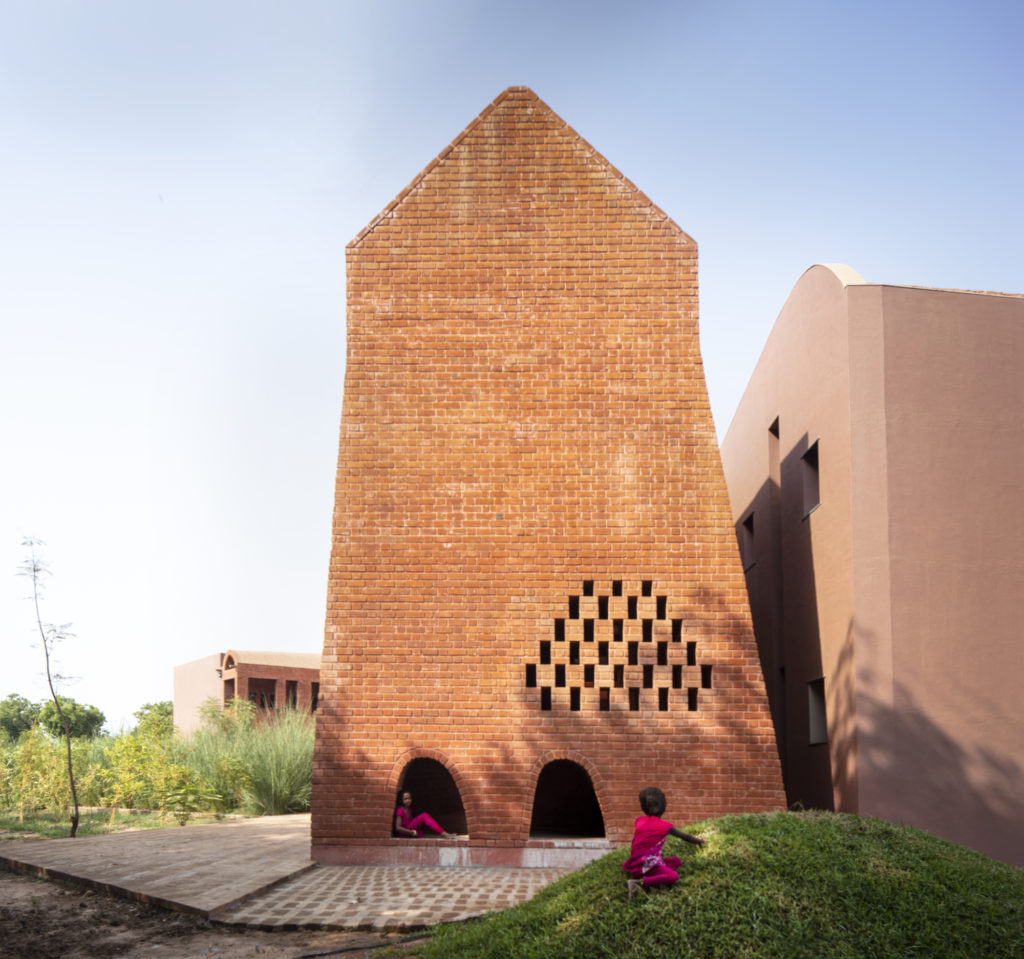 The asymmetry of the arches reiterates that it is not always mandatory to be straight or conventional. The habit of critical thinking, questioning and breaking away from the convention is what the building echoes. The entire school is designed as a sequence of modules; each module would have a pair of classrooms and a corridor, with its tilted vaults sinuously strung.
The asymmetry of the arches reiterates that it is not always mandatory to be straight or conventional. The habit of critical thinking, questioning and breaking away from the convention is what the building echoes. The entire school is designed as a sequence of modules; each module would have a pair of classrooms and a corridor, with its tilted vaults sinuously strung.
 All the modules are designed to create repeated use of shuttering material made in waste steel and can be arranged in various patterns as deemed fit. Reuse of shuttering reduces the cost while using fewer resources making the building sustainable. Roof forms are a sandwich structure with concrete in between layers of brick on the top and bottom. The classrooms have skewed beams with irregular jack arches, a unit of which protrudes to come to a skylight. The roof is waterproofed with a thick layer of brickbat coba in the profile of the arches forming a playful broken brick landscape even on the roof.
All the modules are designed to create repeated use of shuttering material made in waste steel and can be arranged in various patterns as deemed fit. Reuse of shuttering reduces the cost while using fewer resources making the building sustainable. Roof forms are a sandwich structure with concrete in between layers of brick on the top and bottom. The classrooms have skewed beams with irregular jack arches, a unit of which protrudes to come to a skylight. The roof is waterproofed with a thick layer of brickbat coba in the profile of the arches forming a playful broken brick landscape even on the roof.
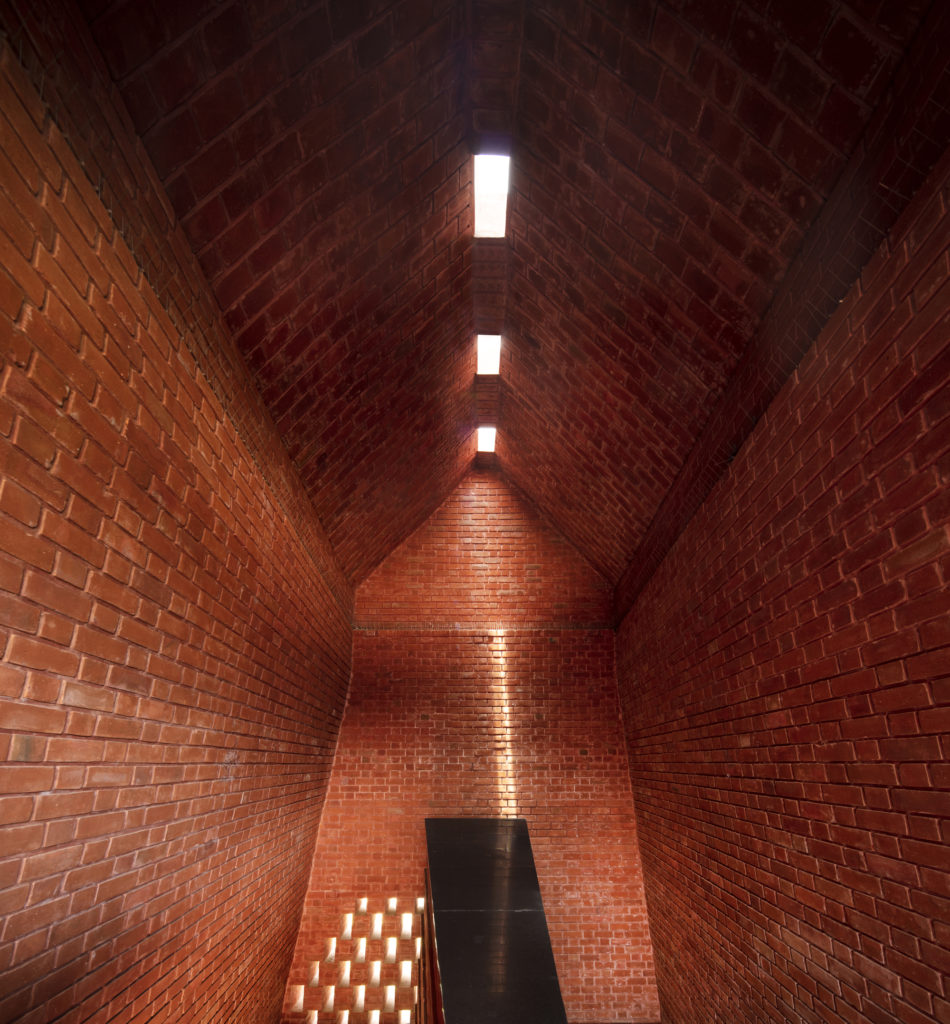 We have stayed true to one material: terracotta – bricks and only bricks in walls, floors, and roofs. Sourced from a kiln close to the site, it is the love of labour from around the town and the craft they bring with themselves that lends the building its immaculate semantic and precision.
We have stayed true to one material: terracotta – bricks and only bricks in walls, floors, and roofs. Sourced from a kiln close to the site, it is the love of labour from around the town and the craft they bring with themselves that lends the building its immaculate semantic and precision.
Likening light to a tangible building material, the architect says: “We often tend to use it like a needle to embroider moments and experiences in our architecture. The sharp dark shadows of the irregular arches in the corridor, the soft glow of tangerine through the lopsided vaults, beams of light through the slits and skylights in the classroom add to this experience, generating intrigue.”
Images courtesy: Niveditaa Gupta


